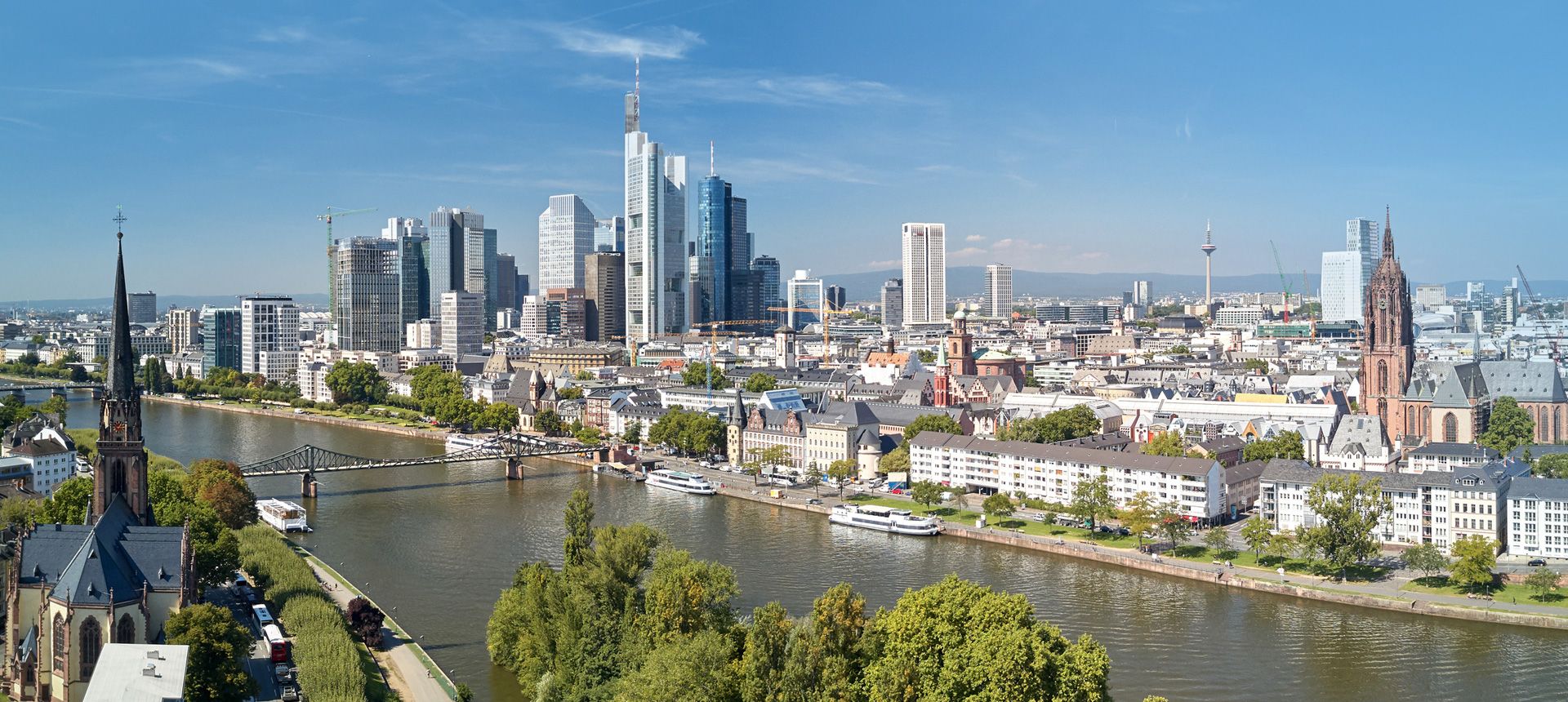Hessen’s traditions can also be tasted
One tasty aspect of German culture is its cuisine. However, many people struggle with food in foreign cultures. But considering the fact that there are several international restaurants in Hessen, you should definitely give Hessian food a try as well.
Traditional German cuisine is very hearty indeed. Many typical German specialities play an important role in Hessian cuisine, such as sauerkraut, boiled and mashed potatoes, roast potatoes, schnitzel and roast meat.
Essential fresh herbs
Many Germans love their pork. If you prefer beef, you should order a brisket of beef or ox. This is cooked and served with either a warm horseradish sauce or the typical Hessian “green sauce” (known in the local dialect as “Grie Soß”). Green sauce is made with sour cream (sometimes also combined with mayonnaise) and various herbs. Chives, chervil, borage, dill, tarragon, parsley, sorrel, basil and lovage are the herbs that are traditionally used. Most chefs have their own special recipe, which means green sauce always tastes slightly different. It doesn’t just go well with beef brisket; it’s also often served with boiled potatoes and eggs, and it’s becoming increasingly popular with schnitzel. The sauce isn’t cooked; it’s served at room temperature or slightly cooled. As the herbs give the sauce its distinctive taste, it only used to be served in spring, summer and very early autumn. While frozen or dried herbs can now be used, connoisseurs insist that fresh herbs are essential to the taste.
“Cheese with music”
You’ll soon realise that all types of cheese are highly appreciated in Hessen. Two specialities are particularly popular and famous: One of them is “Handkäs mit Musik”. “Handkäse” is a full-flavoured cheese served in a vinegar, oil and onion dressing. You can eat it as a light snack in cider taverns.
The other variety might not be as well known, but it’s just as tasty: “Schneegestöber” is camembert puréed with butter, eggs and onions and seasoned with red pepper, black pepper and chives. Both “Handkäs” and “Schneegestöber” are usually served with dark home-made bread.
It’s all about the apple
One of Hessen’s most important agricultural products is the apple, so don’t be surprised when you see it everywhere on the menu. The region’s apples are mainly used in cakes and desserts like apple pancakes (pancakes with apple pieces). These are served with cinnamon, vanilla ice cream and/or whipped cream. But apple purée also plays an important role in the region’s cuisine. Apple sauce is used to create fantastic dishes like apple cake, apple pie, apple turnovers and lots more. Apple juice is also processed in Hessen to make the popular Hessian “Apfelwein”. This is pretty much Hessen’s national drink. It can either be drunk sweet (mixed with lemonade), sour (with mineral water) or neat. Apfelwein is not served in conventional glasses, but in a tankard known as a “Bembel”.
Cider is a little sweeter than Apfelwein and sometimes known as “Süßer” in Hessen. It contains less alcohol and will probably be more to your liking at first. Unfortunately, you can only enjoy regional cider in autumn right after the apples have been harvested.
It’s worth mentioning something about desserts: Cake is not usually served as a dessert in Germany, but rather with coffee as the fourth meal of the day in the afternoon.
We hope this little introduction to Hessian cuisine has left you feeling hungry and looking forward to our regional dishes - bon appetit!
Wine from Hessen
German wine – an echo from the distant past or a treat for your taste buds?
The labels used for the first German wine varieties – like Piesporter Michelsberg, Zeller Schwarze Katze and Niersteiner Gutes Domtal – were covered in emblems and Gothic fonts, pictures of castles and vineyards. The grape variety was rarely mentioned; the wines were sweet and served cold. This image from the 1960s has continued to shape the reputation of German wine for many people to this day.
However, not many people are familiar with the image of quality-oriented German wine growers who have spent generations producing unique wine that reflects the best grape varieties and vineyards. Since production volumes used to be small, only a small amount of these wine varieties was exported. However, German wine growers have found a gap in the market, and the German Rheingau Riesling has actually received higher awards than other wines like the renowned Bordeaux variety. And German Riesling wines are still breaking world records at auctions.
“Große Gewächse”: first choice for special occasions
So much for history. The motto used by German wine institutes – “If you think you know German wine, try it again” – is a good invitation. Modern German wine – wine dry and classic grape varieties – are highly sought after on shop shelves and restaurant wine lists. The wines come with modern packaging, puristic labelling and affordable prices. The region’s premium wines like “Großes Gewachs” and the rare “Beerenauslese”, “Trockenbeerenauslese” and “Eiswein” varieties are connoisseurs’ first choice for special occasions.
The Rheingau is not the only wine-growing region; Hessen’s Bergstraße mountain road is also very famous. The Bergstraße is situated on the western slope and northern foothills of the Odenwald. The wine-growing region starts with a few vineyards in the north of Seeheim-Jugenheim and Alsbach and stretches all the way to the border between Hessen and Baden-Württemberg to the south of Heppenheim. The largest cultivated areas can be found between Zwingenberg and Heppenheim.
Understanding wine labels
German wine labels have long been criticised for being confusing and cryptic, because comprehensive information about the wine is condensed to a minimum. However, it’s very easy to understand the information.
Germany has laws that state exactly what has to be included on wine labels: the region, the name of the producer and the ripeness. Further information like the grape variety, the vintage and style (dry or medium dry) must be mentioned if particular criteria are met. Unfortunately, the law does not state the order in which this information has to appear on the label, so you won’t always find it in the same place. However, the most important thing is that you know the difference between the information provided by the vineyard and the wine cellar, i.e. the difference between ripeness and style.
Here is the most important information you need to know:
- “Klassisch”: This wine is produced from traditional, dry, regional grape varieties, especially Riesling, Silvaner and the Pinot family (this includes Weißburgunder / Pinot Blanc, Grauburgunder / Pinot Gris and Spätburgunder / Pinot Noir). The vineyard is not named.
- “Selection”: This wine is a premium version of “Klassisch” wine with a minimum degree of ripeness from the selection. It’s marked with the name of the vineyard.
- “Großes Gewächs” – this wine is similar to “Selection” wines. Members of the German Association of Quality Wine Growers have decided to label their best dry wines with an award from their vineyards. This award is known as “Erstes Gewächs” in the Rheingau and stands for high quality.



